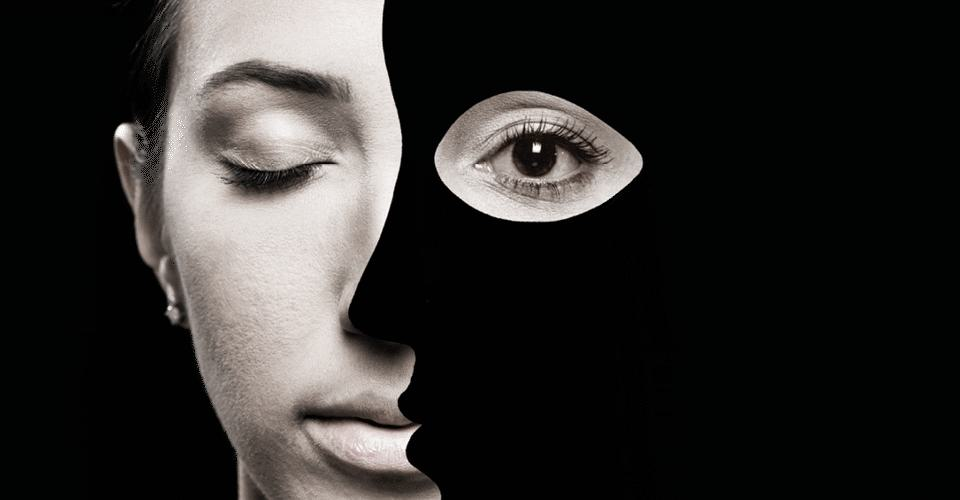- September 14, 2015
- More articles By Liam Farrell
- portraits by John T. Consoli
In drips and drops, the incidents erode an idealized vision of modern higher education: A noose draped around the neck of a statue honoring the man who integrated the University of Mississippi. Obscene gestures and names tossed at black University of Washington students protesting police conduct. The chant from an all-white University of Oklahoma fraternity, suggesting lynching before allowing any African-American members.
And at the University of Maryland, an unearthed student email rips around social media, spewing invective against minorities and women. Then, when a Muslim student group protests the showing of the film “American Sniper,” its members are inundated with threats.
Just weeks later, those drops are overtaken by a roaring flood only 30 miles away in Baltimore, as riots follow the death of a 25-year-old black man who was severely injured in police custody.
The contemporary American higher education system was shaped by the civil rights movement in the 1960s, the rise of feminism in the 1970s, and the push for LGBTQ recognition in the 1990s and 2000s. After witnessing one of the country’s most potent realizations of racial equality—the two-time election of an African-American to the White House—it was natural to assume some problems had finally been resolved.
But perhaps, in the quest to become color-blind, we really just closed our eyes.
“You know and I know,” writer James Baldwin wrote to his nephew on the centennial of the Emancipation Proclamation, “that the country is celebrating one hundred years of freedom one hundred years too soon.”
Younger generations have made great strides. A cross-country study of 3,000 people 14 to 24 years old by MTV and David Binder Research in 2014 found that more than 90 percent believe everyone should be treated the same regardless of race.
But that belief is a veneer on more unsettling results: 48 percent of white respondents also believe discrimination against white people is as big a problem as discrimination against racial minorities. And 65 percent of people of color said whites have more opportunities than they do.
To add to the confusion, most young people in the survey said that they want to have an open conversation about race, but are uncomfortable doing so and have no idea how to even start.
The University of Maryland, which won a 2015 Higher Education Excellence in Diversity Award from Insight Into Diversity magazine, is a place that can help begin a dialogue.
“We have a highly diverse student body and a campus community that has been very responsive and engaged around issues of racial social justice,” says Kumea Shorter-Gooden, UMD’s chief diversity officer. “We need to expand the safe spaces on campus so that people from all races and identities can engage in honest, difficult, but ultimately productive dialogue about race, privilege, stereotypes and how we can move forward. This is already happening in classes and corridors and dorms, but we can do much more.”
Below are eight essays from faculty, staff and students exploring the challenges of prejudice in higher education, and how we can change.
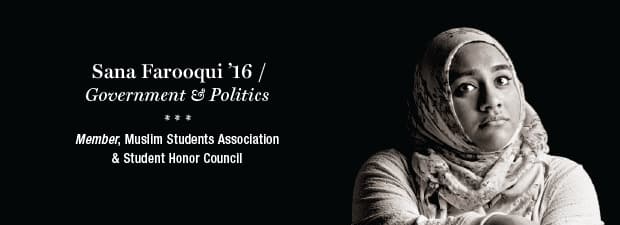
WHERE ENDING ISLAMOPHOBIA CAN START
A friend of mine, a recent graduate, hated talking about Middle Eastern issues in class. Whenever anyone mentioned 9/11 or terrorism, people glanced over at her, as if she was somehow connected to all that because she’s Muslim and wears a scarf. Other students tell me how surprised their classmates look when they speak accentless English or know basic American history.
These may seem like petty grievances, but they stem from the harmful racialization of Islam and Muslims. The vast majority of American Muslims are first- or second-generation immigrants from the developing world—a solidly nonwhite bloc of nations. The tragic events of 2001 and ensuing conflicts in majority-Muslim countries created an “us-vs.-them” mentality among the American public. Muslims were cast as inherently anti-American and unpatriotic. In addition, ethnic and racial differences between the majority-white American and majority-non-white Muslim-American populations boost this divisive view, as do visible “Muslim” identifiers like the headscarf. Media sources, too, have helped reduce all Muslims to brown, America-hating terrorists—a prime example being the portrayal of Muslims in “American Sniper.”
These stereotypes can translate into harmful opinions; a day after the Chapel Hill, N.C., shootings of three Muslim students, a UMD YikYak post predicted that “they would have ended up working for ISIS anyways.”
As centers of learning and knowledge, college campuses are prime settings to combat Islamophobia and mitigate ethnic, racial and religious conflict. Colleges should foster dialogue about these social issues, educating students and providing platforms for solutions.
A good example was the spring screening of “American Sniper” at UMD, hosted by the College Republicans and College Democrats. They assembled a panel with speakers from different academic fields, points of views and personal backgrounds, tackling the social issues of the film head-on. But many audience members—especially white males—left right after the movie ended, before the panel discussion began. This is counterproductive; it’s imperative for the most privileged members of a society to be present in such dialogue for any real change to occur.
To boost attendance at such events, professors should consider offering extra credit to students. The university can also engage students by incorporating dialogue around social issues in the required UNIV100 course. Perhaps the Words of Engagement course, which focuses on teaching and learning cultural diversity through intergroup dialogue, should be mandatory for incoming freshmen or transfers.
Solidarity between different minority groups on campus can be a strengthening factor, too. It was heartening to see groups such as the Asian American Student Union, Political Latinxs United for Movement and Action in Society, UMD’s NAACP chapter and UMD Feminists support the Muslim Students Association during the “American Sniper” event.
Ultimately, it’s a point of personal pride to be a Terp, especially with a president and administration who actively advocate inclusion and tolerance. But overlooking the details and contours—as insignificant as a passing comment, for example—can gradually deepen and escalate social issues. Whatever solutions the university tries to implement, the main goal should be to foster a permanent environment of mutual respect, diversity and pluralism that lingers with students after graduation.
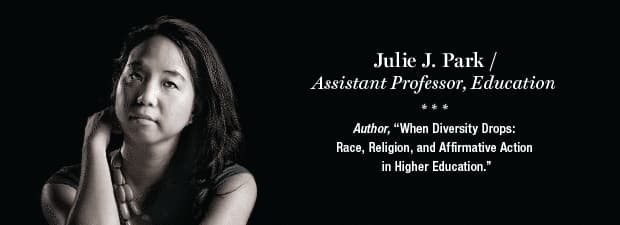
IT’S TIME TO TALK FRANKLY
This past spring, we were reminded of the persistence of blatant and explicit racism on our college campuses. Scholars have identified multiple, interlocking elements of the campus racial climate, and it is relevant to consider how these play out at a place like UMD.
The historical legacy of an institution: UMD continues to grapple with the remnants of its history due to race, be it the controversy of Byrd Stadium or the legacy of Greek life, with its history of explicit and mandated racial segregation. The past affects our present, whether we recognize it or not. We owe it to ourselves to talk frankly about the impact of the past and how it continues to shape the currents of our campus today.
Structural diversity: This term refers to the racial and ethnic composition of the student body, and research has shown that a racially heterogeneous institution maximizes the educational benefits linked with diversity. My research collaborators and I have identified how social class diversity, in combination with racial diversity, improves student interaction across race. Social class diversity does not replace racial diversity, but they are complimentary. At UMD, we have strides to make in bolstering racial, ethnic and socioeconomic diversity, and affirmative action (both race- and class-based) continues to be an essential tool in reaching these aims.
Administrative/Organizational: Faculty, administration and policies are critical to making diversity work. It is important for campus units to continue to act affirmatively to hire faculty and staff who reflect the diversity of our student body, as well as to support the administrative infrastructure needed to run diversity-related programming. Ethnic studies programs and general education curriculum requirements are other important ways of incorporating these issues.
Behavioral: This dimension of climate encompasses cross-racial interaction and interracial friendship, as well as interaction with peers of the same race and ethnicity. Unsurprisingly, cross-racial interaction and interracial friendship are highest at racially diverse universities. Perhaps less intuitively, involvement in ethnic student organizations is linked with significantly higher cross-racial interaction; these groups have an important role in supporting a broader climate for diversity. Notably, research has linked involvement in fraternities and sororities with lower cross-racial interaction and interracial friendship.
Psychological: The perceptions that students, faculty and staff have of the campus’s racial climate are a key element and reflection of its temperature. White students tend to have the most positive perceptions of climate, while students of color tend to perceive climate less favorably. A university can have diversity and institutionalized supports in place, but the subjective experience and perception that students and others have of the institution can be telling.
Our campus has been a national leader in supporting diversity-related efforts and building a positive campus racial climate, but challenges and barriers remain. This will be a significant year as we seek to continue to talk frankly about the inequality that surrounds our campus and permeates university life.
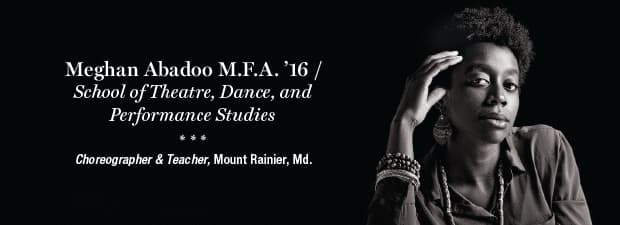
DANCING WHILE BLACK
As a dance artist who is also a black, heterosexual and able-bodied woman, it is necessary for me to acknowledge that my work will always be a construction of my identity, no matter the content.
Last spring, I choreographed a dance theater production called “Wake Up!,” inspired by Spike Lee’s 1988 film, “School Daze.” With the setting moved from a fictitious historically black college campus to UMD, a predominately white institution, we set out to explore issues of race and gender as it concerns contemporary African-American realities.
In the opening scene, the audience enters from the back of the theater and walks on “stage” into a homecoming party. As the celebration progresses, a group of performers initiate the “step”: a percussive dance tradition within black Greek organizations. The choreography then transforms into a repetitive run toward and against a wall, shifting the tone from festivities to a shadowy stillness as the Negro spiritual “I’m Buildin’ Me a Home” surges to a sudden end.
Silence!
And then—without any transition or explanation—back to the party. The juxtaposition in this scene—discomfort simmering underneath relative expressions of contentment and a relentless drive toward a seemingly immovable structure—is what it feels like to be a person of color within a mostly white institution.
I’m keenly aware of subtle and obvious reminders that my brown-skinned body—and others like me—exists within a racialized system of inequity, injustice and bias. Yet, while these reminders are openly discussed within communities of color, they are often ignored elsewhere because there is a widely held misconception that racial inequity is no longer a major problem—that we are “post-racial”—because race-based discrimination is illegal.
This misunderstanding of systemic inequity is tough to unravel and confront. Nonetheless, UMD does have a program that takes up this challenge, the Words of Engagement intergroup dialogue program administered by the Office of Diversity and Inclusion. I participated in this six-week course, and the weekly gathering was a profound and safe environment where people of different racial backgrounds could share their curiosity, emotional pain, divergent viewpoints and stories.
Art, especially dance and theater, shares this capacity for individuality to flourish within a unifying environment of creativity and innovation. It creates space for the mutual coexistence of conflict and healing. It can’t alone fix the systemic, inequitable practices that promote the safety and success of some groups over others. Art can, however, catalyze and sustain action when words struggle to generate lasting change. Artists must be integral voices in the strategic efforts toward building more diverse, inclusive and equitable spaces on college campuses and beyond.
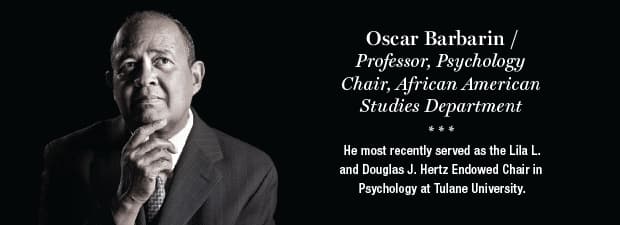
FINDING YOURSELF IN YOUR ALMA MATER
My initial entry into the University of Maryland in 1974 was not a comfortable one. As an African American raised in New Orleans in a era of legalized segregation, I had little experience being among whites. I arrived here as a newly minted Ph.D., appointed as an assistant professor of psychology and director of the Community Field Station, when UMD was still grappling with the tumult of integration and protests from black students over a lack of support. I still harbored uncertainties about how I would fit in and be viewed by faculty and a student population that was still mostly white—in 1975, only about 2,000 of the university’s 36,000 students were black.
Early in my arrival in College Park, I strolled from my office in the psychology department toward McKeldin Library. As I passed others, I tried to catch their eye and greet them with a warm “hello” or “good morning” as we invariably do in New Orleans, even with strangers. They all averted my gaze or looked away. I felt a chill of rejection and wondered whether UMD would ever feel like home, given its culture, history and traditions.
The negative feedback I encountered was not directed at me personally, but at the things I valued and were central to my professional identity: applied research with the poor and African Americans. Outside of the core group that I worked closely with, faculty kept their distance. While some students were gracious and accepting, others crossed the boundary into a disrespectful challenging of my evaluations of their work. They seemed to feel that they could question and disagree with me more than with my white colleagues.
But I had nowhere else to go. I had to make it here. I realized that I would be at peace only if I took hold of the situation and owned being a member of the university. I had to convince myself that I, Oscar Barbarin, black man, belonged here, and this was my university just as much as it was that of my white colleagues and students. I cannot say that I was persuasive enough to quiet my anxieties.
Today, I see that both the University of Maryland and I have changed for the better. I am awed by the growth of the university, how well the campus has maintained its classic beauty, and the success at efforts to diversify demographically. In my return to the campus, I experience no self-doubt, no questions of belonging. At last, I can truly say I belong here.
When I pass by students, though, they still look away (this must be Northeastern culture). When I see students of color, I wonder how many continue to experience uncertainty and entertain questions about belonging. How many are engaging in the same self-doubt that pained me many years ago?
My hope for them is that Maryland will do much to make this their home away from home, so that in the future they will look back at their time here and say with conviction: UMD is my alma mater in the truest and most authentic meaning of the words, “My nurturing mother.”
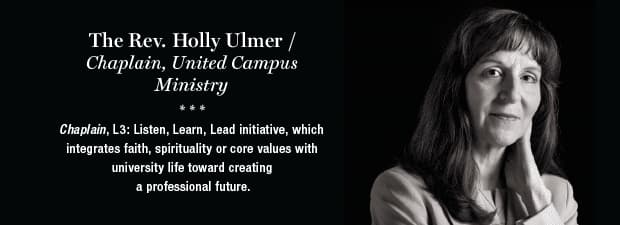
WE CAN’T AFFORD NOT TO LISTEN
It was an inspiring occasion on our campus two years ago, when His Holiness the Dalai Lama gave the annual Anwar Sadat Lecture for Peace to an overflowing crowd. I remember well his kindness, call for compassion and commitment to secular ethics education for schoolchildren around the world.
A popular quote by the Dalai Lama speaks to the critical needs of our time: “It is vital that when educating our children’s brains that we do not neglect to educate their hearts.”
I contemplated some of his teachings recently while walking in College Park, and a phrase on a Shuttle-UM bus jumped out at me: “Fearless ideas create social change.”
“As wonderful as ideas are, they are not enough,” I thought. “Fearless ideas plus compassionate hearts create social change. Fearless ideas plus acts of loving kindness create social change.”
While many significant diversity and multicultural efforts are making a critical difference on our beloved campus, I believe that there is a great need for a deeper level of educational engagement to help dispel the root causes of racial, ethnic and religious conflicts; that as an institution of higher learning we need to get to “the heart of the matter” by facilitating a greater awareness that truly transforms and heals, in order to ensure the well-being of local, national and global communities.
Effective education is not just an activity that engages the mind, but is something that also impacts the whole person, creating leaders with integrity, good interpersonal skills (including multicultural fluency) and a sense of social responsibility toward others.
I have witnessed education that weds understanding with getting to the heart of the matter by serving as a co-facilitator for UMD’s Words of Engagement intergroup dialogue program. These credit courses, which have a social justice component, give students valuable skills to create bridges of understanding across identity groups often in conflict.
There is a critical need for people to have the opportunity to learn about the life experiences of others across different identity groups (race, gender, religion, ethnicity, sexual orientation, class, etc.) in a safe, expertly cultivated, inclusive environment such as a classroom. It is not enough to just intellectually understand the “other.” One truly meets the other by listening on an emotional level as well. In this way, we witness the pain created by social injustice, even when it lies outside the framework of our own experience.
Learning how to temporarily suspend our own personal worldview or belief system, in order to listen effectively to another’s, can be one of the most difficult things we do. This is especially true when an emotionally charged issue of racism, sexism, heterosexism or classism is involved.
Can we truly listen to each other across racial, ethnic and religious differences? Honor the authentic experiences of each other? Address the pain and end the injustices that some of us experience personally, and that ultimately affect us all?
Can we afford not to?
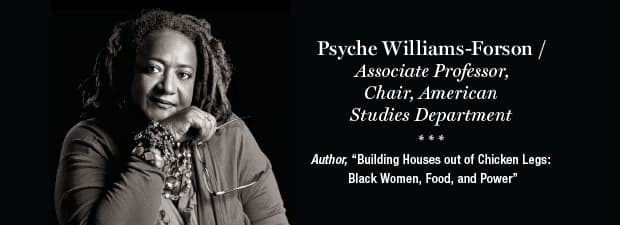
THE COST OF A SOCIAL-MEDIA EDUCATION
For many of us, a controversial movie cancellation, protests of police violence and other incidents on college campuses involving racism, sexism, homophobia and xenophobia are nothing new. But to an entire generation raised on social media, these incidents can be devoid of any context or history.
Social media provides an instant spotlight for commentary on these events from the informed, the ignorant and the anonymous. And many of our current students have come of age during an era that dubiously promised a “post-racial” America; yet, with little or no knowledge of America’s racial history, this concept and its promises have fallen on deaf ears.
My experiences at the University of Maryland—as a graduate student and now as a tenured faculty member—offer different sightlines of our community than those of many of my students. I find that as times and students have changed, what has not, unfortunately, is attention to a comfortable status quo: Those in authority (academic or otherwise) are assumed to be white and male. With this perception, 18- to 20-year-olds attempt to dismiss the body of research, theory and intellectual observation that I bring to bear on issues of race, class, gender and culture that surface as we navigate the syllabus.
Actually, their dismissal or conscious erasures, often attempt to supercede my authority as a well-researched and informed scholar. Perhaps social media dialogues that make all sharing equivalent, whether sourced or simply felt and lived, inform this. So how does one teach controversial subjects when students do not see you as an expert on such matters? How do you teach on these topics when they do?
The Department of American Studies seriously engages the challenge of creating an informed citizenry by teaching and researching through the lenses of the cultures of everyday life and cultural constructions of identity and difference. We challenge our students to think critically about society and to recognize that the current experiences of social, cultural and racial unrest have a historical root. This approach enables us to examine why people behave and think the way they do, and it helps us to know how these issues affect our communities and us.
The scholarly methods we employ move students from reductive assumptions about bodies, for example, to informed critiques of identities. These methods ask students to question whether they see me—a black, female, food studies scholar—as a facilitator of knowledge about the intersections of food, culture and power, or simply, perhaps, the body who cooks their evening meal in the cafeteria.
In our lifetime, we most likely will not “fix” the problems of society. But American studies begs us to question and analyze existing paradigms, because we cannot change them without rigorous inquiry. Moreover, the humanities require students to recognize and address these problems in ways that might work for social justice and help to effect change.
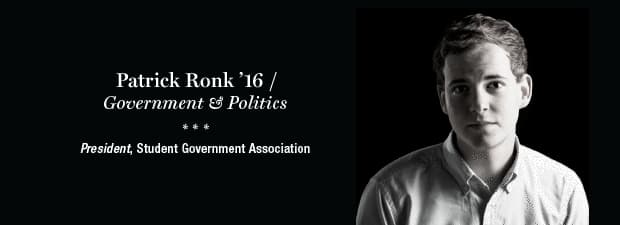
TALK ABOUT RACE IN DORM ROOMS—AND CLASSROOMS
At many campus-based universities, students live, eat, take classes and spend most of their time in the same general area and interact mostly with other college students. This bubble, while often criticized as a fun fair removed from the “real world,” does serve a significant purpose in developing a person’s sense of self and how he or she treats others.
Enrolling at the University of Maryland is the first time that many of its students are exposed to others from backgrounds and life experiences that are different from their own. Students from every race, ethnicity, gender, religion and sexual orientation are brought together in classrooms, dining halls and dorm rooms. This can break up preconceived notions or bigotry and allow for greater understanding and mutual respect.
Those social interactions aren’t enough, however, to address all instances of racism or the roots of inequality and stereotyping.
Even on a campus as diverse as UMD, there are instances of hate speech and bigotry every semester. The question is how we build on the inherent diversity of our student body and its unique experiences to address those issues and move past not just instances of hate on campus, but those in the world at large. Institutions of higher learning are (or ought to be) well equipped to handle these hard conversations, and I can’t think of a better place to have them.
In my freshman year College Park Scholars colloquium class, Dr. Nina Harris (who I now look to as a mentor) carefully and tactfully deconstructed the notion of white privilege for me and 90 or so fellow classmates. As a straight, white, middle-class male, acknowledging that skin color alone gives you subtle yet substantial advantages in almost every aspect of life isn’t an easy notion to accept at first. By acknowledging the privilege of my race along with those of my gender and economic status, I have come a long way in changing how I view and approach race, discrimination and social justice, and I hope many of my classmates feel the same way.
Encouraging diversity and talking about race is never easy, and unfortunately can often cause a lot of harm, backlash and bigoted views to come out. But there’s no real progress without friction.
Luckily, it’s at that intersection of student life and the classroom where hearts and minds can be changed. If a university can expose its diverse student body to each other while providing them with a true education on causes and systems of racial inequality, then we can go a long way to making not just college, but also the real world, a more inclusive space.
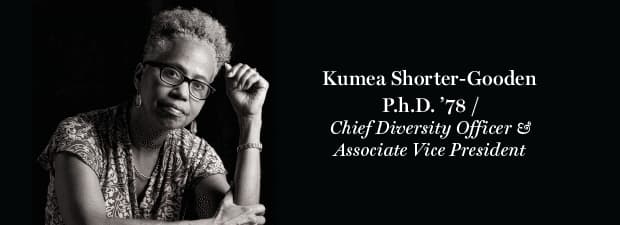
THE RACISM WITHIN
All of us have racist attitudes and beliefs. There, I said it. Given how pervasive and entrenched negative stereotypes are, it’s virtually impossible to not believe some of them, even if unconsciously. Black people, like me, are also at risk for internalizing negative self-views. Claude Steele, a social psychologist, calls them the “threat in the air,” the disparaging stereotypes as normative and unavoidable as oxygen.
So how do we fix this? How do we become non-racist, or better yet, anti-racist?
First, we need to examine our biases and stereotypes about people who are black or Latino or lesbian or Muslim or from any societally marginalized group. (A black, bisexual woman once said to me, “‘Isms’ travel in packs,” meaning that we have to examine our prejudices across an array of social identities.) Where did these views come from? What did we learn from our families while growing up? What did we hear on the playground? What does the news and social media tell us? What are our quick assumptions, for example, about those young black men in hoodies walking down the street?
We need to seek out opportunities to talk about our beliefs with others, to be open, candid and respectful, but not hide behind political correctness. Political correctness can be a useful tool, but it can get in the way when we are digging deep and figuring out our biases.
Second, we need to listen to the voices of those who’ve been marginalized. How do they describe and make sense of their experiences? What are they telling us? What do they need from us? We need to excise knee-jerk reactions: “You must be mistaken. I’m sure they didn’t mean it.” “It’s not that bad.” “Race had nothing to do with it. Everybody experiences that.”
Third, we need to learn all that we can about how racism operates structurally, in places like our schools, corporations and criminal justice system. Racism isn’t simply an interpersonal problem; it’s also embedded in U.S. institutions, including our universities. But ironically, when things are institutionalized, they can be less obvious and harder to see, name and call out. So we need to study up in order to become more discerning.
Third, we need to learn all that we can about how racism operates structurally, in places like our schools, corporations and criminal justice system. Racism isn’t simply an interpersonal problem; it’s also embedded in U.S. institutions, including our universities. But ironically, when things are institutionalized, they can be less obvious and harder to see, name and call out. So we need to study up in order to become more discerning.
Fourth, we need to commit to lifelong learning and action, through ongoing engagement with people from diverse backgrounds and social identities, thus fostering our capacity to see things from different vantage points; by speaking up and out when we see instances of racism or other “isms,” even seemingly harmless micro-aggressions; by challenging institutional racism in our workplaces, schools, houses of worship, social clubs and professional associations; and through continued examination of our own identities, power and privileges.
Fifth, we need to recognize that we’re all in this together. We’re not bad people for having racist beliefs. Sadly, we come by that honestly. What’s bad is when we don’t invest in confronting this poison and coming together to uproot it.
I’m game, yet I know I’ll stumble in the process. Will you join me? TERP
